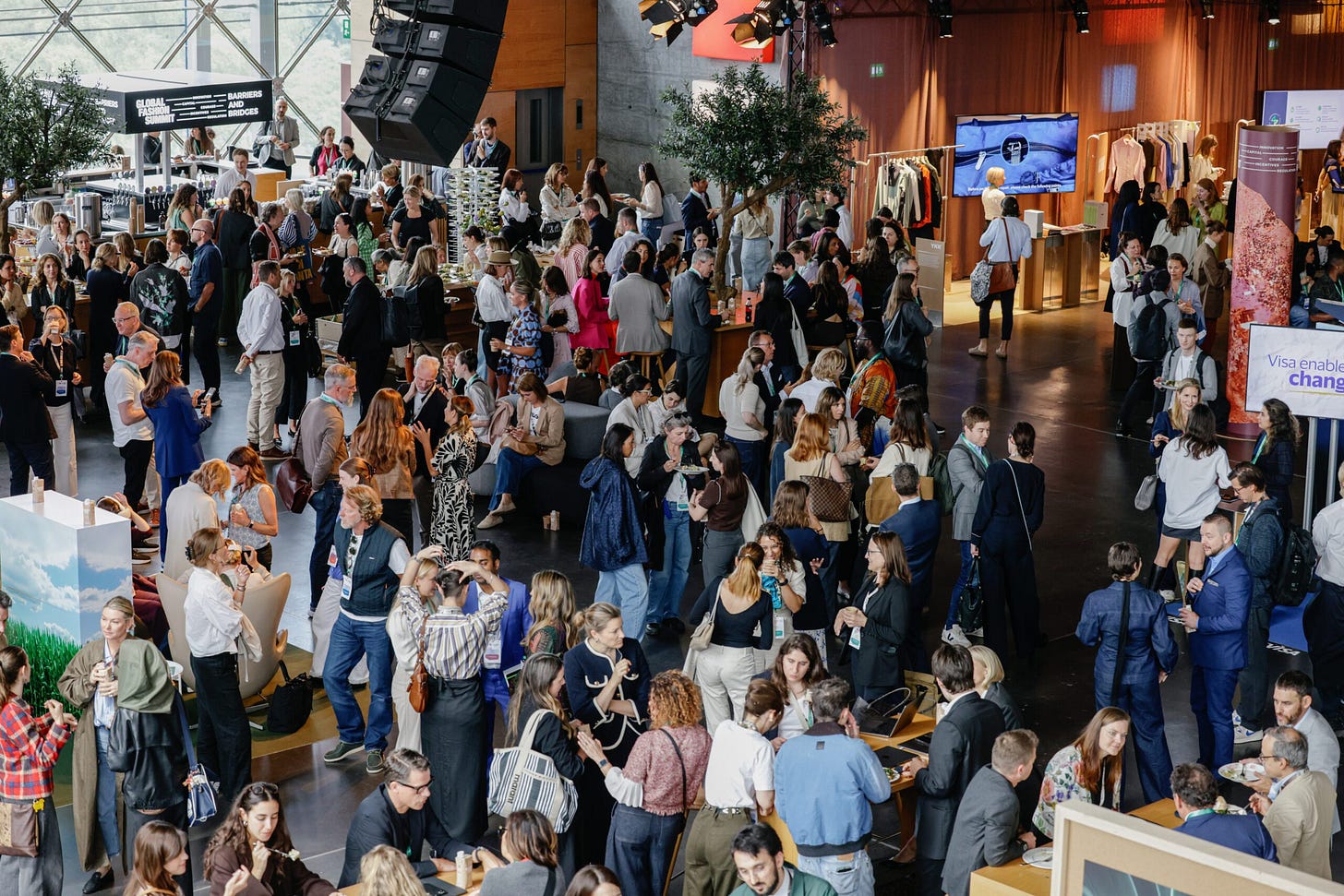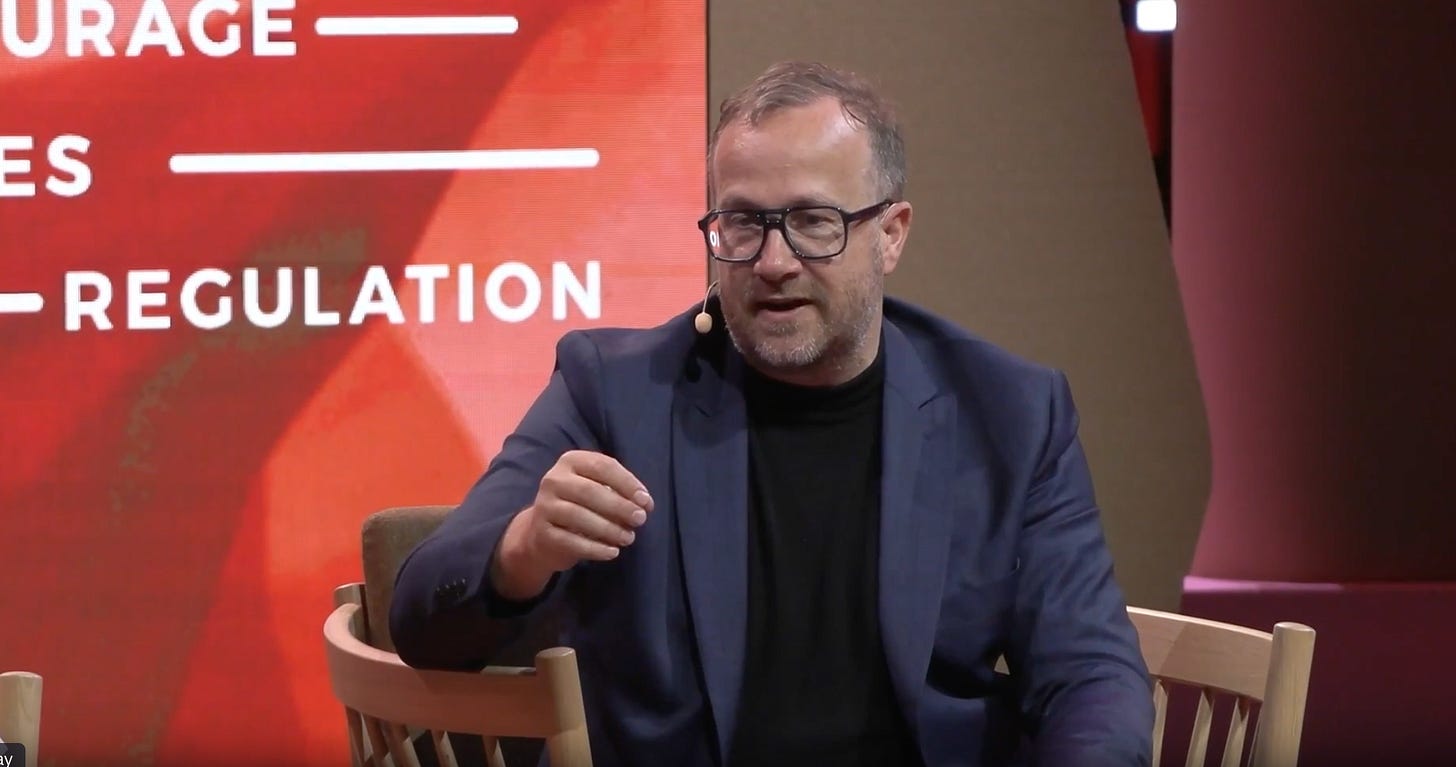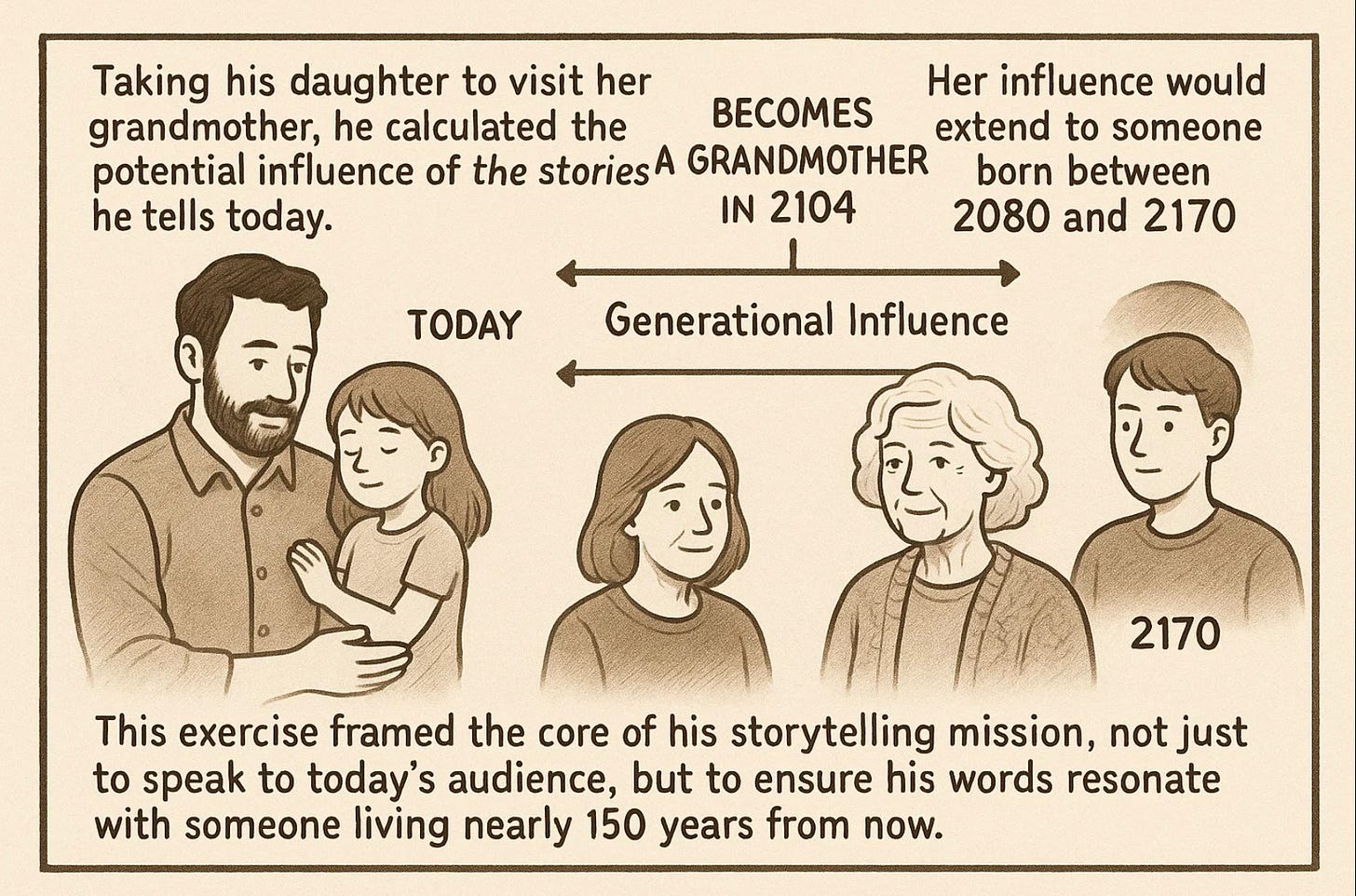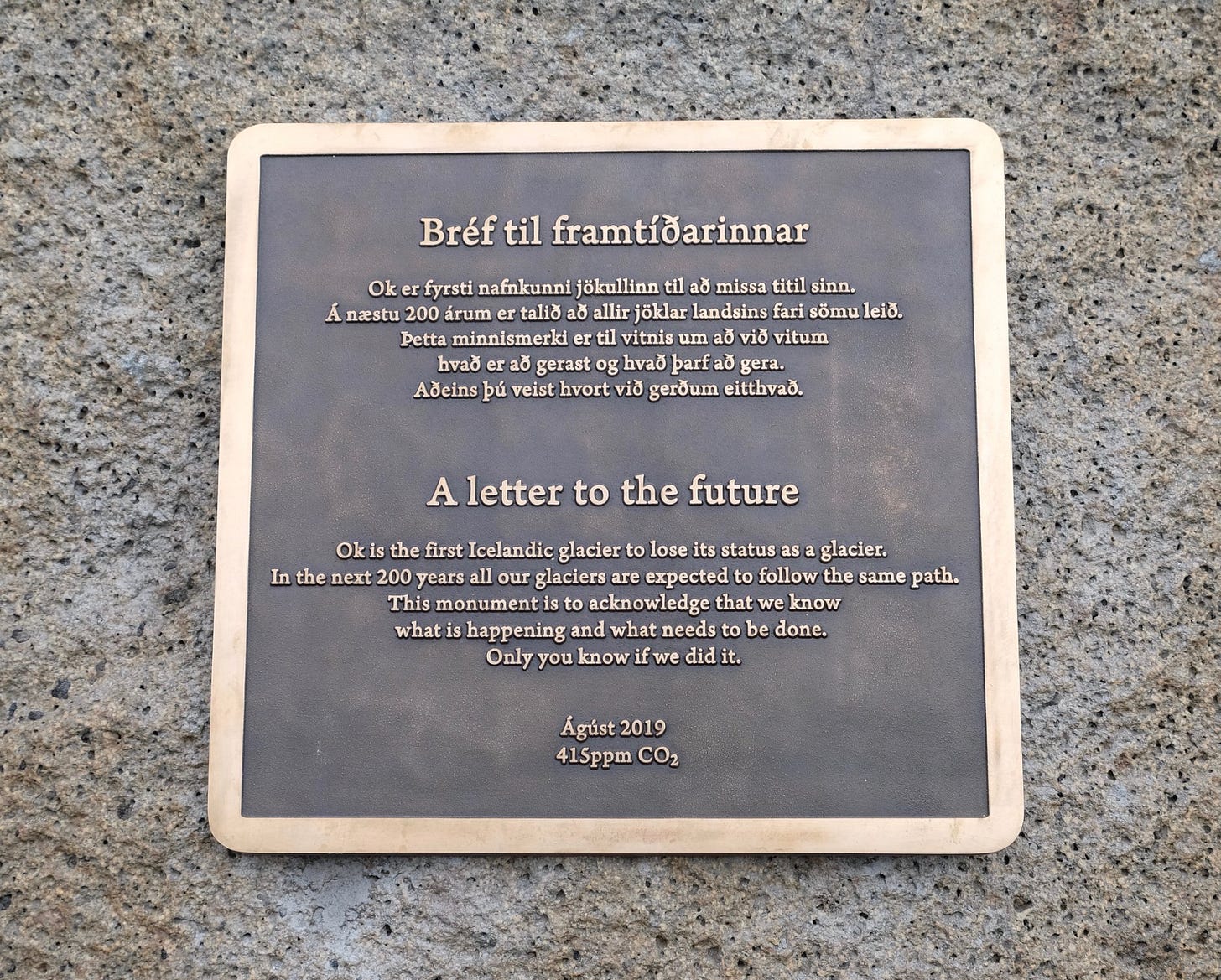Don't Just Say 'Sustainability', Make Us Feel It: How to Craft Climate Comms That Move People☘️
Three Case Studies ✍️ from the Global Fashion Summit 2025 in Copenhagen 🌟
How to craft a sustainability campaign that truly stands out? And we mean, truly. As someone who’s going through 10s and 100s of campaigns every week, there are only a few that stick. And a handful that inspire action. While its easier to be a marketer today than anytime before with respect to the tools available, it is also harder, since everyone has these tools and points of differentiation are narrowing. So how does one truly write their climate strategies in a way that sticks?
We’re back from another inspiring week in Copenhagen ✨ meeting with entrepreneurs, designers, scientists and innovators solving some of the most pertinent problems in fashion from across the world.
In this newsletter, we’re sharing some lessons for fellow marketers, founders and storytellers on how to craft a sustainability campaign, three mini case studies that got our attention at the Global Fashion Summit: Less Noise, More Action.
Case Study I : Relevance Across Generations
Lessons for Marketers from Andri Snær Magnason, Icelandic writer & documentarian
In a conversation about communicating climate change, Icelandic author and filmmaker Andri Snær Magnason offered a powerful reframing: “To understand 2100, I have to visit my grandmother.”
His metaphor reveals a critical lesson: when it comes to climate, data alone isn’t enough. Numbers like sea level rise or “pH 8.1” are abstract and distant; they fail to emotionally connect. Instead, Magnason suggests we shift focus from technical terms to human context, what he calls “looking at the periphery, not the black hole.”
To illustrate how data can be transformed into meaningful storytelling, he spoke about the importance of creating relevance across generations. He shared a personal example: taking his daughter to visit her grandmother, he calculated the potential influence of the stories he tells today. If his daughter becomes a grandmother in 2104, her influence would extend to someone born between 2080 and 2170. This exercise framed the core of his storytelling mission, not just to speak to today’s audience, but to ensure his words resonate with someone living nearly 150 years from now.
Magnason’s Key Takeaways for Marketers
Shrink the psychological distance
Don’t position climate impact in abstract future terms. Bring it here and now through generational storytelling, emotional anchoring, and personal relevance.Replace data with meaningful metaphors
Numbers don’t move people, stories do. Instead of stats like “30% circularity,” tell a story about a jacket that’s meant to be worn in 2170 by someone not yet born.Make climate emotional, not just urgent
Emotional urgency beats abstract fear. Create campaigns that tether environmental facts to love, family, memory, and cultural rituals.Memorialise loss to give it meaning
Magnason’s 2019 glacier memorial in Iceland commemorated the country’s first glacier lost to climate change. However, this fleeting news item became a lasting cultural marker.In his reflections on climate storytelling, Magnason shares how he tried to communicate the loss of this glacier “Okjökull” to climate change.
The challenge: what words could be etched into a copper plaque that might outlast even stone? Copper, he notes, can last 6,000 years. His ambition wasn’t just to memorialise the past but to write for the future, for beings not yet born.
The glacier, awkwardly named “Ok” (or “Ök”), became a deep metaphor. In ancient Icelandic, "ök" referred to a yoke, a beam used to carry water. Now, the water is gone. The yoke remains, not to carry water, but to carry the burden of the future. In Proto-Indo-European roots, the same sound “ök” connects across languages: in Sanskrit, “yoga”, a spiritual and physical yoke; in some dialects, "ök" also signifies zygote, the first cell that carries all genetic information of a future being.
So Ok became a symbol:
A place where water once flowed.
A burden passed to future generations.
A beginning and an end.
But as beautiful and complex as this symbolism was, Andri ultimately chose simplicity. The plaque at the site reads:
"Ok is the first Icelandic glacier to lose its status as a glacier.
In the next 200 years all our glaciers are expected to follow the same path.
This monument is to acknowledge that we know
what is happening and what needs to be done.
Only you know if we did it."
August 2019
Case Study II: BBC Storywork’s Fashion Redressed Series – Creative Strategy Highlights through 12 stories
Global Fashion Agenda’s collaboration with BBC Studios for Fashion Redressed series brings a lot of interesting videos to light. Fashion Redressed is a digital film series spotlighting the people and innovations reshaping fashion as we know it. From pioneering materials and regenerative design to cultural heritage and circular business models, the series reveals how creativity and collaboration are shaping a more sustainable future for fashion.
Having gathered performance data through these videos, the team from BBC had the following insights:
Test boldly: Run A/B testing across video formats to see what resonates= style, tone, and structure all matter.
Dial-up emotion: Focus on storytelling that taps into emotional intensity to drive memory and long-term impact.
Take it outside: Ditch the studio. Ground the story in real-world settings - urban streets, landfills, wardrobes, markets.
Cast with purpose: Choose a singular, compelling protagonist. One voice. One journey. Authenticity over celebrity.
Rally the crowd: End with a call to the collective - a clear, inspiring invitation to act, share, rethink.
Pick up the pace: Edit with rhythm and urgency. Today’s viewer scrolls fast -so meet them there.
Show the fix: Don’t just expose the problem. Spotlight real solutions- circular models, innovative materials, everyday actions that scale.
Case Study III: eBay x Love Island: Secondhand Meets Mainstream
On eBay, the word “vintage” is searched 1,200 times per minute, a clear signal of how today’s consumers feel about sustainability. 👀
eBay is working directly with brands to sell for resale, enabling them to:
Protect brand identity in the secondhand space
Extend product life cycles by keeping items in circulation
Engage with conscious consumers where they already are
For that reason, we find the eBay’s return as the official sponsor of Love Island series quite a quirky and bold collaboration.
This collaboration truly exemplifies this shift : secondhand meets mainstream.
By embedding pre-loved style into the villa and then watching contestants champion it alongside major fashion players, eBay is catalysing a more nuanced shift: not replacing fast fashion overnight, but infusing it with nudges both consumers and brands toward more conscious choices.
Watch the campaign here:
This Is the Part Where You Subscribe
Good content. Big energy. Occasionally weird, always worth it. 👌🏾
We know, everyone says that. But we actually mean it.
🔗 Send this to someone who gets it.






